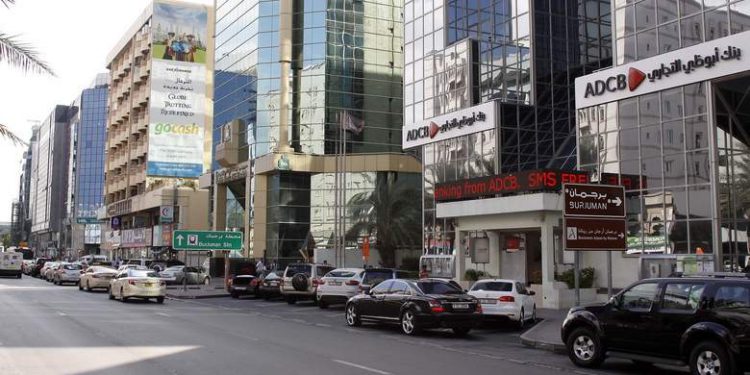As with the rest of the banking sector across the GCC region, Abu Dhabi’s financial institutions are seeing liquidity conditions tighten as part of the fallout from weaker energy revenues.
Loan growth in the emirate is projected to slow this year as a result, coupled with an increase in borrowing costs.
Energy squeeze
With public revenues down, governments in the region are increasingly looking to bridge the fiscal gap by tapping deposits and expanding domestic borrowing, a recent report by Abu Dhabi Commercial Bank (ADCB) noted.
“Domestic funding will remain important for covering the GCC’s fiscal deficit in 2016,” Monica Malik, chief economist at ADCB, told media in April, citing expected drawdowns of government deposits and increased borrowing from banks across the region.
According to the most recent data from the Central Bank of the UAE (CBU), government deposits were down 13.9% year-on-year (y-o-y) in February at Dh158.3bn ($43.1bn). Combined government and public sector deposits, meanwhile, had fallen by 5% to Dh343bn ($93.4bn).
“Lower oil revenues are driving tightening of liquidity in the GCC, with overall deposit growth slowing down significantly to around 3% in 2015 from around 10% in 2014,” Nitish Bhojnagarwala, assistant vice-president at Moody’s, told media last month.
Although this has been partly offset by private sector deposits, domestic and government credit demand has also risen, up 8.1% y-o-y in February, while demand from government-related enterprises (GREs) climbed by 5.5%.
Liquidity crunch
Bank liquidity has tightened as a result, particularly in Abu Dhabi, where the local government is a dominant depositor in the financial system.
The UAE-wide loan-to-deposit ratio – a key measure of banking liquidity – climbed from 87% in June 2014 to 100.9% the end of last year, according to figures from the CBU and the National Bank of Abu Dhabi (NBAD).
This is already having an effect on other segments of the economy, which are finding it more difficult to get access to affordable credit.
In the real estate sector, project completions in Abu Dhabi reached a 10-year low in the first quarter, due in part to tighter liquidity and reduced state spending, property consultancy JLL noted.
Banks’ margins have also felt a squeeze. NBAD, for example, which is one of the principle lenders to the Abu Dhabi government, saw its net profits dip by 11% y-o-y in the first quarter of 2016, following on a 6% contraction last year. ADCB, meanwhile, recorded an 18.4% y-o-y decline in net profits in the first quarter.
Speaking to media in January, Alex Thursby, group CEO of NBAD, said tighter domestic liquidity conditions have prompted the bank to look beyond conventional lending to generate additional revenue.
NBAD has sought to tap its international operations and capital markets, as well as its domestic mortgage segment, to supplement earnings.
On notice
In early March ratings agency Moody’s said it had put Abu Dhabi’s “Aa2” government bond and issuer ratings on review for downgrade, citing a weaker Abu Dhabi government balance sheet due to falling energy revenues. The review is expected to be completed in mid-2016.
However, plans to reduce public expenditure and broaden the tax base could mitigate the impact on its credit standing, Moody’s said.
With the agency also citing stress on the banking sector as a credit negative, plans by the Abu Dhabi government to tap international bond markets this year to fund a wider budget deficit could provide some welcome breathing room.
The emirate’s deficit is projected to increased by 13.9% this year to Dh36.9bn ($10bn), media reported in late April.
Abu Dhabi plans to cover the gap mainly through bond issuances, with a benchmark-sized international issue expected later this year – the emirate’s first offer in seven years.
“Despite the drop in crude prices [and] the collapse of the latest oil talks, Abu Dhabi’s new bond issue should manage an attractive price that will set the stage for other GREs to follow,” Apostolos Bantis, a credit analyst at Commerzbank, told media last month.
While commercial banks could come under continued pressure from falling government deposits this year, the banking system remains resilient and is well placed to weather any negative external shocks, according to Mubarak Rashed Al Mansoori, governor of the CBU.
“Critical statistics demonstrate that banks operating in the UAE are maintaining high capitalization, stable funding and sufficient liquidity,” he told OBG earlier this year.
Oxford Business Group
17 May























































